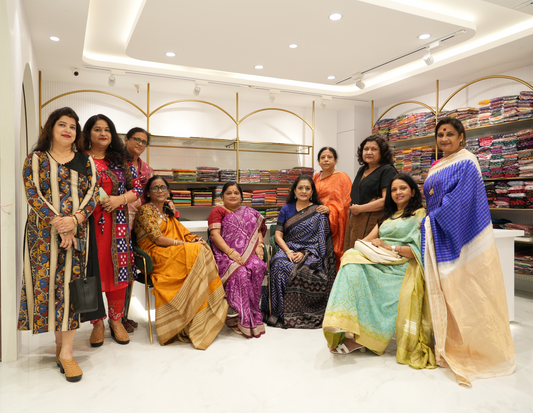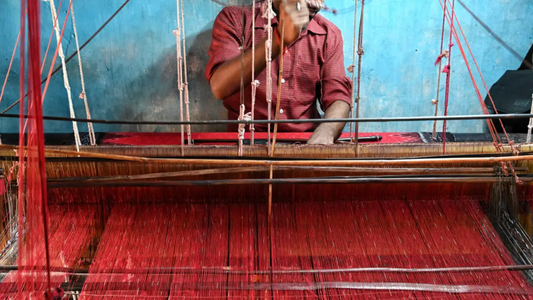
The garment of the Indian subcontinent today has crossed gender and ages. Today saree has become a very fashionable attire for both boys and girls. The garment comes in four to nine meters and can be draped in many styles and ways. We today see various bloggers posing differently in different ways. This attire can be a daily use and or a very beautiful attire for any grand celebrations. Sarees are elegant, gorgeous, simple, attractive, pretty; all in all it is an epitome of beauty. These attire has traveled decades, centuries and ages and has evolved each time. With the evolution of the attire, the saree has never lost its charm and aura. Whether it was 100 years back or its a contemporary event , It has always brought all the eyes on it.
Tracing the Saree
The six yards of cloth has its roots from the Indian subcontinent or can be traced from the significant civilization called Indus Valley Civilization. The saree origin dates back to 2800–1800 BC in north west India. It began the journey when cotton was cultivated and this was followed by weaving and the coloring began with the production of indigo, lac, red madder and turmeric. With these vibrant, the sarees became a wonderful attire for every event in India.
The Changes of Sarees
With the rich foreign ladies settling down here, sarees were made with expensive stones and threads to make them different from the crowd. With slow development , sarees began to add motifs, flowers, patterns and shapes and make each weave distinctive. It also became the first Indian attire to go international.
Sarees come in various fabrics making them more versatile. Silk, cotton Georgette and chiffon are some fabrics that weave into sarees. Internationally there are many Indian handloom sarees that won hearts. Kanjivaram, Sambalpuri, Banarasi, Venkatgiri, Paithani, Berhumpuri, Bomkai, Dongria, Chanderi and many others have been such sarees. To take care of these saree you require care and love.

Different Fabrics of Handloom Sarees Requires Extra Attention
Cotton Sarees
Cotton handloom sarees require special attention. Never wash your cotton sarees with other clothes because it can get discolored and fade soon. Do not keep them immersed in water for too long as doing that can lead to dis-colouration. Don't wring them too hard and do not forget to starch them to maintain their crispness and dry in shade.
Silk Sarees
These are royal saree and are quite expensive. This brings in extra care. Make sure you wrap a muslin cloth around them before keeping them in your wardrobe. The muslin cloth will prevent the silk saree from getting damaged because of moisture. Silk sarees must be kept in a dark place which will prevent dis-colouration. And always go for dry cleaning and avoid cleaning at home.
Chiffon
Chiffon is a delicate fabric which also brings in extra care. If washing at home make sure you are not mixing it with other clothes. Wash the chiffon sarees in a delicate wash mode of the washing machine. It requires lukewarm water and liquid detergent for proper wash. Always dry it in shade and do not hang chiffon sarees for a long time.
The Nos to Your Handloom Saree
- No Machine Washing- This might damage the fabric and bring wrinkles to your saree. Always wash with a mild detergent or prefer dry wash.
- No to Sunlight- Your handloom sarees need no sunlight. Ṭhe colors might fade away with the rays. Prefer to dry in a room.
- No Creases- Do not fold the saree so hard that it might come up with permanent ones. Put newspapers in between to avoid creasing.
- No Metal- Avoid handing sarees in metal hangers or dry in metal wires. This can leave a permanent stain of metals on your handloom sarees.
- No Ironing- Do not iron the sarees with direct heat. Put a newspaper or dupatta to avoid burns on the saree.
- No to Moths- Moths and other insects can feed on your sarees. Keep naphthalene balls to prevent them.
If owing any handloom sarees of any material make sure you take proper care and keep them with extra love and proper wash. These tips will help you to maintain your treasure of sarees for a longer period of time.










